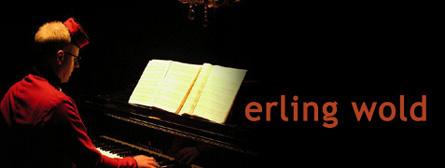After a moderately long flight, by way of the City of Light, we arrived at the Sofia Airport on Bulgaria Air, the National Carrier, and cabbed it to the Hotel Arte on Alexander Dondukov, our bags following behind by a few days. In the morning, we darted between the speeding cars, finding safety in numbers, to arrive at the nondescript entrance of the Zala Bulgaria, locked up tight, the only way in through the servants' entrance, aka the musicians' or possibly the smokers' entrance, and wandered into the Sanctuary of the Hall itself, nervous with excitement. The first rehearsal began in a shaky and workmanlike fashion. I found my nervousness turning to dread, but gods be praised, in the end, through the remonstrations of Alexei Kornienko and the skill of the First Rate Classical Musicians, the performance was lovely. And after the dress rehearsal, the very talented Elena Denisova, who had been watching from above, pronounced the piece perfect; diamond perfect; which thrilled me to my toes.
I'm sure I have mentioned before how gorgeous the Ives' 4th Sympony is, and it was, even wearing its Bulgarian accent, and my piece was performed between it and the Bernstein Symphonic Dances from West Side Story (see poster above). "Sandwiched between two old dead white guys" says Jim Cave, with a twinkle in his eye.
The Bulgarian Radio was to have broadcast the concert, which fell through, but luckily I had secreted a few low-res recording devices (to wit, an iPad and an iPhone) about the place and was able to reconstruct with some fancy footwork a mix heard here.
The piece is scored for a large but not too large ensemble, heavy on the brass, heavy on the crescendi, and topped off with a pretty solo in the middle.
 |
| explaining a fine point to Alexei |
Waiting overnight for our plane in a quick revisit to Sofia we had dinner with Dimitar Moskovsky, the bass clarinetist for the orchestra, serenaded by the fast 2+2+3 rhythms of the restaurant band where, as Dimitar pointed out, the threes and the twos don't quite share a common denominator. This feel is explained some here, and is referred to as a metric time bend in the wikipedia article:
For example, the Bulgarian tune Eleno Mome is written as 7=2+2+1+2, 13=4+4+2+3, 12=3+4+2+3, but an actual performance (e.g., Smithsonian Eleno Mome) may be closer to 4+4+2+3.5.
The feel of Western Art Music is measured and gridded, formed of a steel that is difficult to bend, the swings of jazz and the quintuplet-y versions of the double-dotted funk of the 70s untaught in the conservatory.
But, before, inside the very small fourteenth century chapel dedicated to St Petka of the Saddlers, we were killing time, exuding a musical vibration that led us to a fellow tourist, the young American organist Michelle Horsley studying in Frieburg, fresh from performing John Cage, and with her came a sense of home, of the aspects of American that I love, there, in that faraway place.
But, before that, there was the visit to the Thracian Tomb of Kazanlak, notable for the beauty of the tomb itself, and notable for the three-way party that stumbled out of the broom closet when we rang the front doorbell, the middle-aged gothic transwoman unlocking the door as she fixed herself, while the other two giggled. I wanted so much to find the words required to ask exactly what had been going on in that closet, but the moment passed, and the ticket taker took her seat while the other two walked off arm in arm.






No comments:
Post a Comment